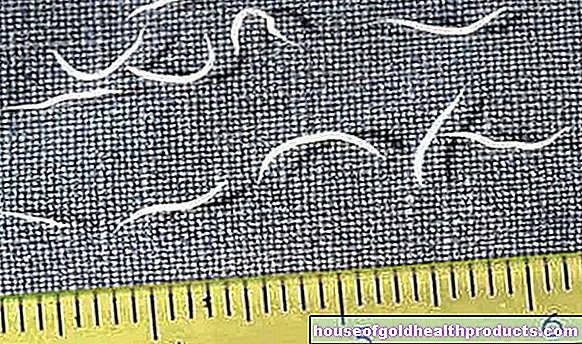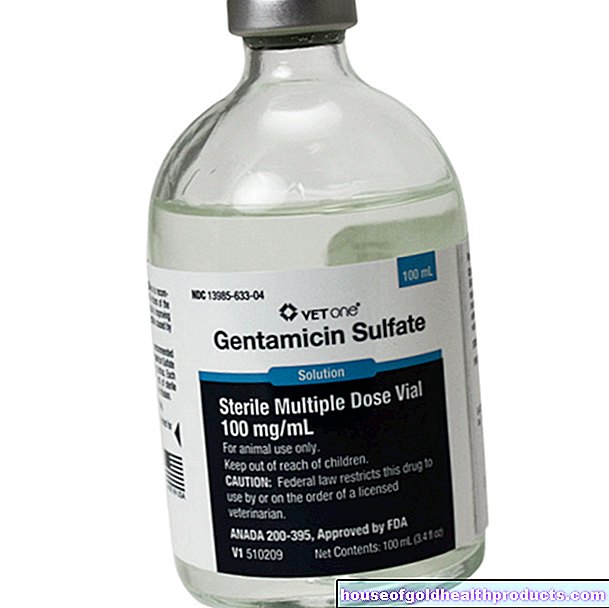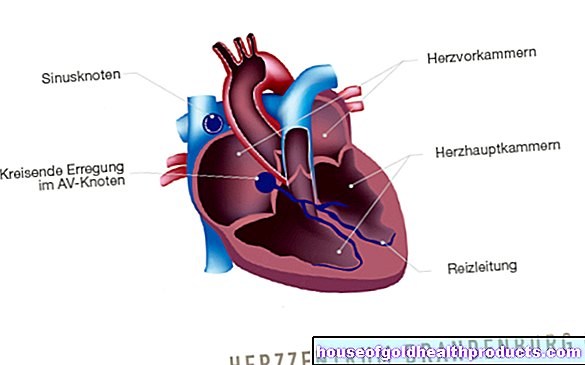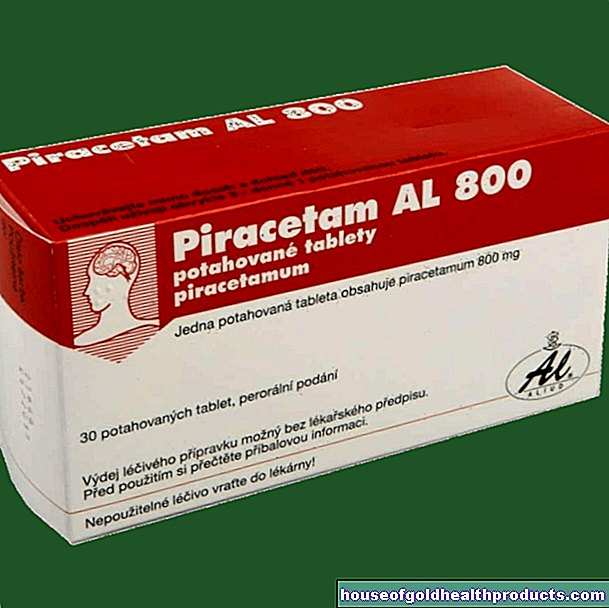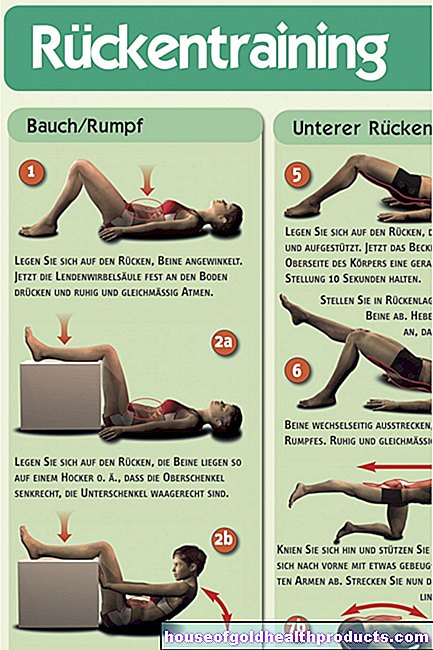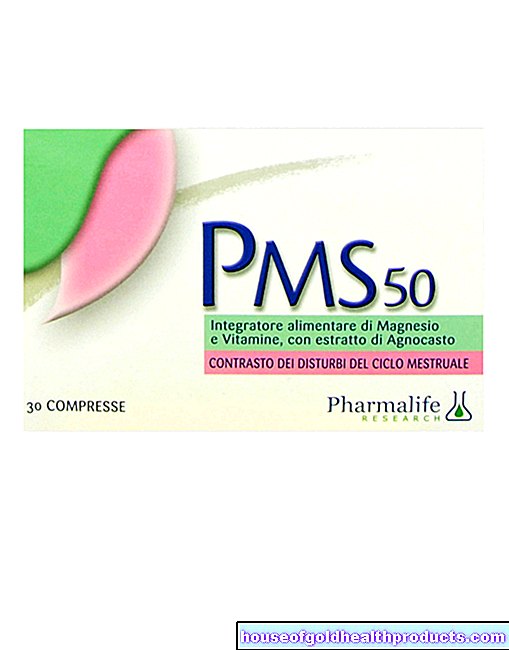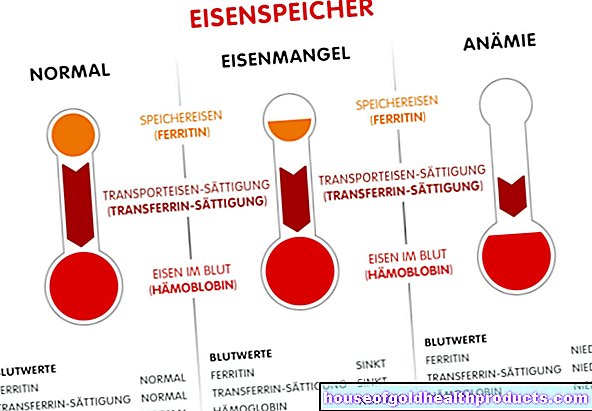aorta
Nicole Wendler holds a PhD in biology in the field of oncology and immunology. As a medical editor, author and proofreader, she works for various publishers, for whom she presents complex and extensive medical issues in a simple, concise and logical manner.
More about the experts All content is checked by medical journalists.The aorta or main artery is the central vessel in the bloodstream. The heart pumps the blood from the left ventricle directly into this thickest of all vessels. In an adult, five liters per minute flow through them at rest. Read everything you need to know about the aorta here!
The central vessel
In adults, the aorta is around 35 to 40 centimeters long and, with a diameter of around three centimeters, it is the thickest vessel in the body. It goes directly from the left ventricle of the heart and directs the blood from the heart into the body's circulation (large blood circulation) - at rest, around five liters of blood per minute flow through the main artery, with exertion up to 30 liters. The aortic valve, one of the four heart valves that prevents the blood from flowing back, is located between the left ventricle and the aorta.
Section of the aorta
The main artery can be roughly divided into the following sections:
The first section, which starts from the left ventricle, is ascending and is called the ascending aorta. It lies within the heart sac (pericardium) and has two branches - the two coronary arteries that supply the heart muscle.
The second section of the main artery begins when it passes through the pericardium: it makes an arch (aortic arch, arcus aortae) upwards and obliquely to the left behind. Three main branches branch off from the aortic arch, which supply the head, neck and arms with their further branches.
The aortic arch is followed by the descending section of the main artery, the descending aorta. It runs first in the chest (then called the thoracic aorta) and then - after passing through the diaphragm - in the abdomen (then called the abdominal aorta). The branches of the thoracic aorta supply the lungs, chest wall, and adjacent thoracic viscera. The branches of the abdominal aorta supply the abdominal organs.
At the lower end, the aorta divides into the two large pelvic arteries, which with their branches supply the pelvis and legs.
Structure of the aorta
Like all large blood vessels, the wall of the main artery has three layers:
- inner layer (intima)
- middle layer (media, tunica media)
- outer layer (adventitia, tunica externa)
The main artery is one of the elastic type arteries. This means that the middle layer is particularly thick and contains a lot of elastic fibers.
The tasks of the aorta
The main artery ensures the blood supply, the continuous blood flow and maintains the arterial blood pressure.
The pumping heart creates large pressure differences in the circulatory system through contraction (systole) and relaxation (diastole). Due to its elasticity, the aorta can compensate for this and thus enable a continuous flow of blood. With this "Windkessel" function, it maintains the arterial blood pressure (in healthy people 120/80 mmHg) so that it also exists in more distant parts of the body.
Diseases of the main artery
In order to be able to fulfill your tasks without problems, the vessel wall of the main artery must remain elastic. However, this elasticity decreases with age because deposits form on the inner walls of the aorta (and other vessels). This arteriosclerosis (hardening of the arteries) is not only age-related, but is also caused by unfavorable lifestyle factors such as obesity, smoking, high blood lipid levels and high blood pressure.
A pathological sac or spindle-shaped enlargement of the main artery is called an aortic aneurysm. If it suddenly tears, the affected person can bleed to death internally.
Aortic dissection is a sudden tear in the inner skin (intima) of the main artery, caused for example by arteriosclerosis or an accident. In extreme cases, the aorta can tear open at the point in question, which then (as with a torn aortic aneurysm) is life-threatening!
Tags: magazine healthy feet tcm



